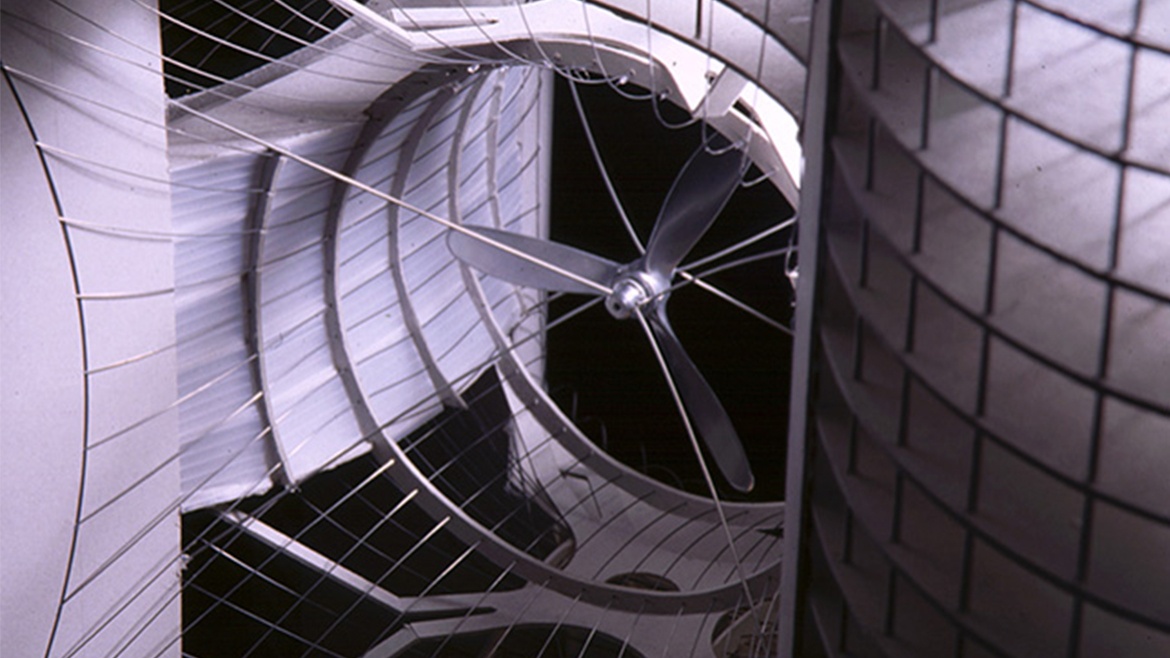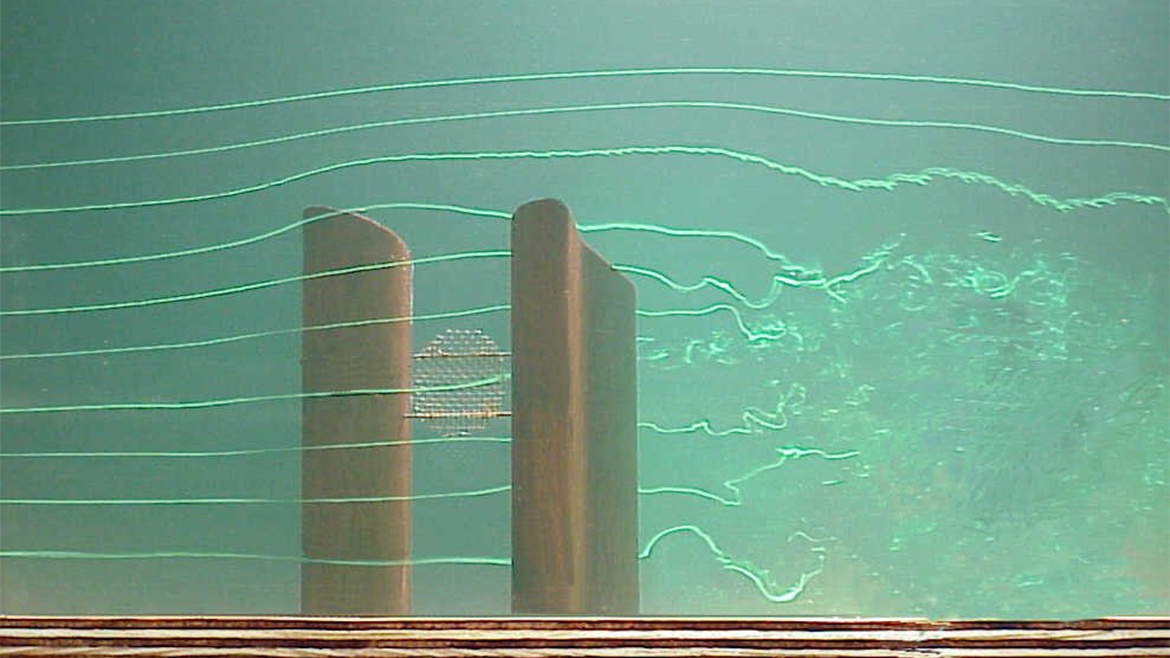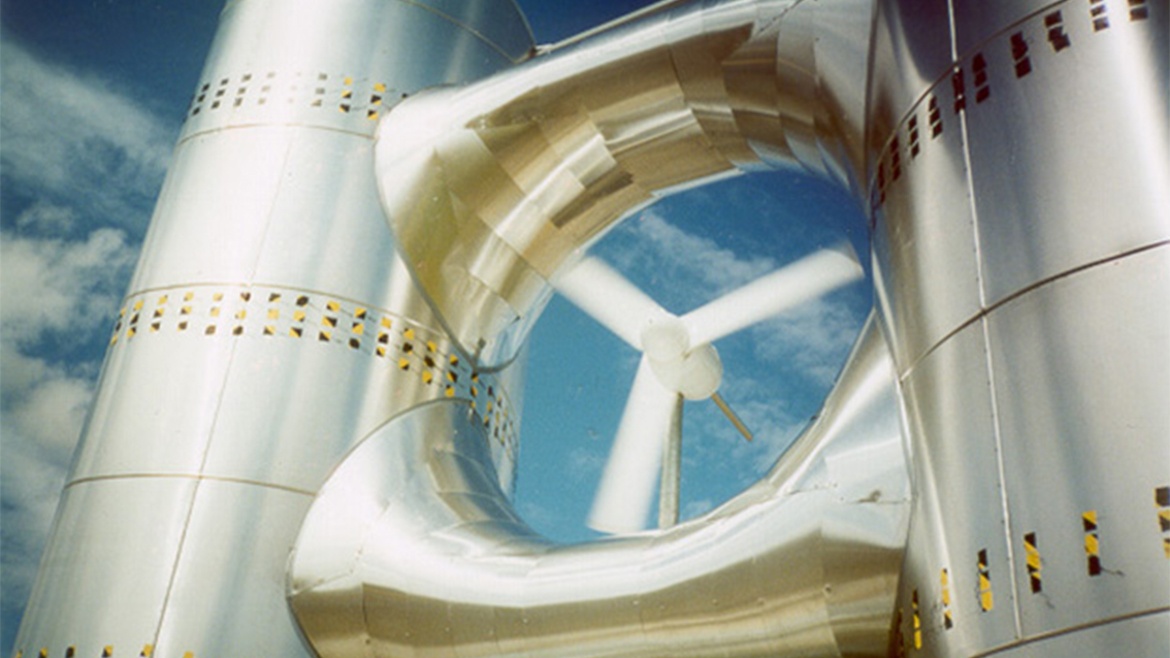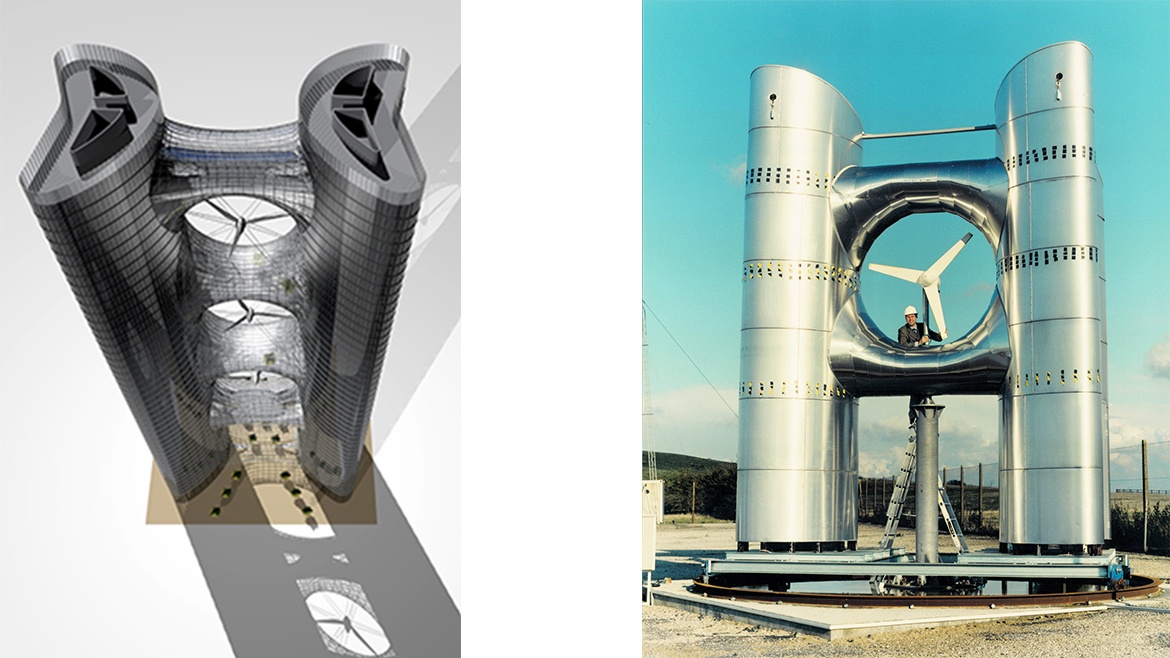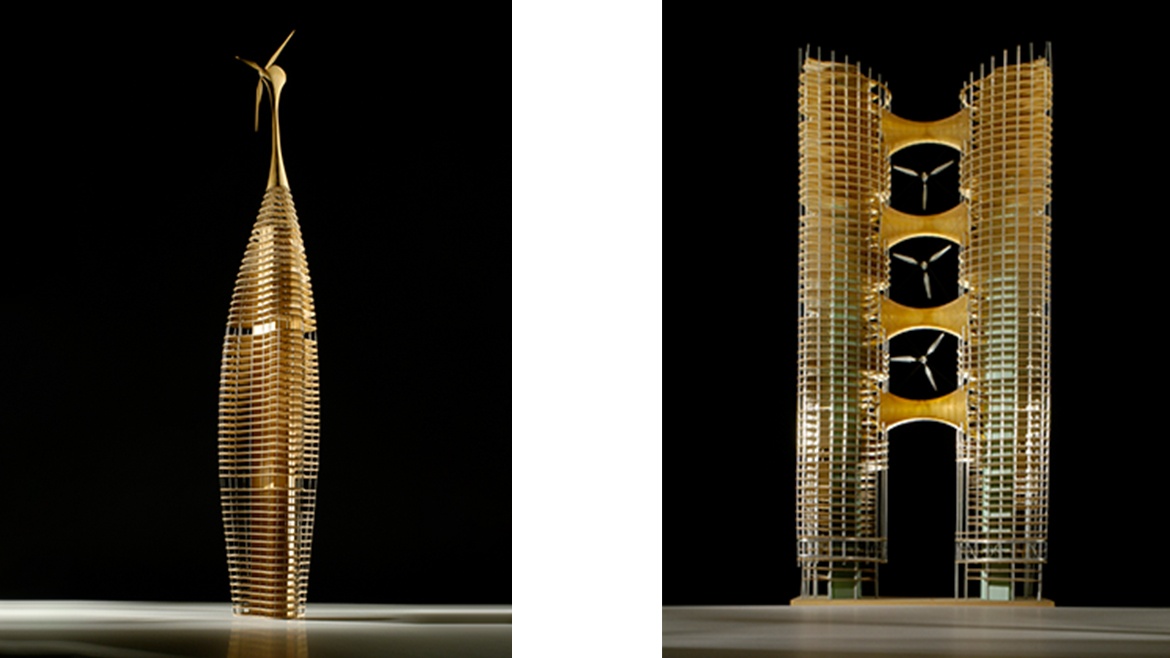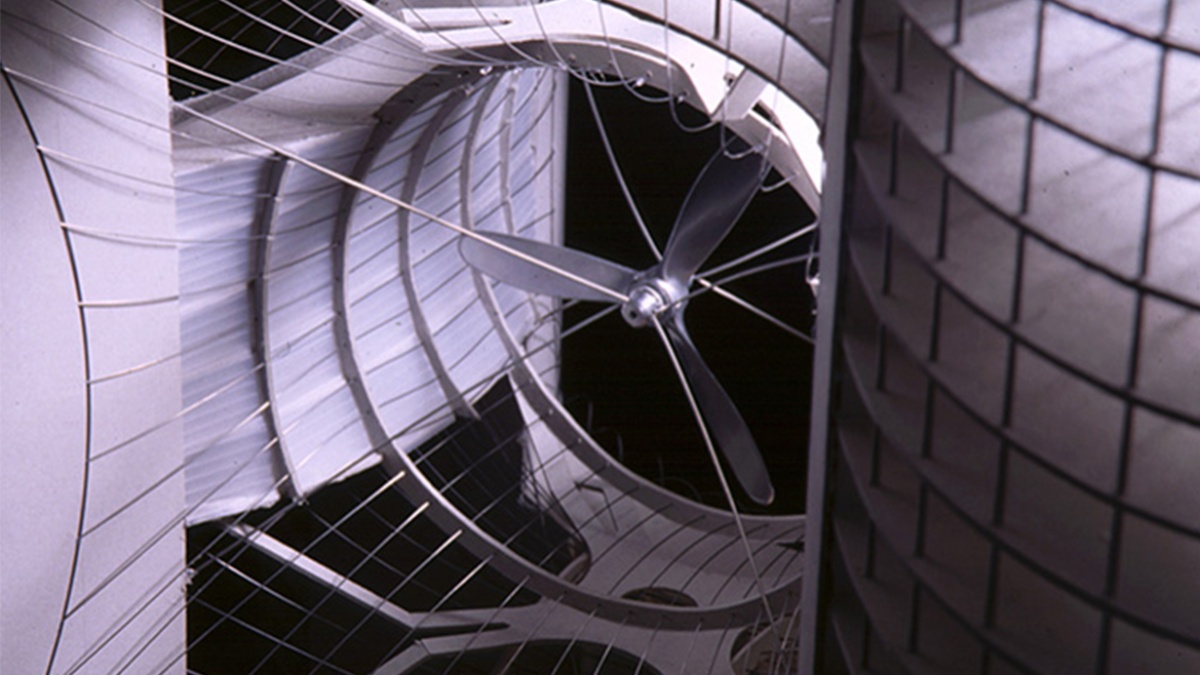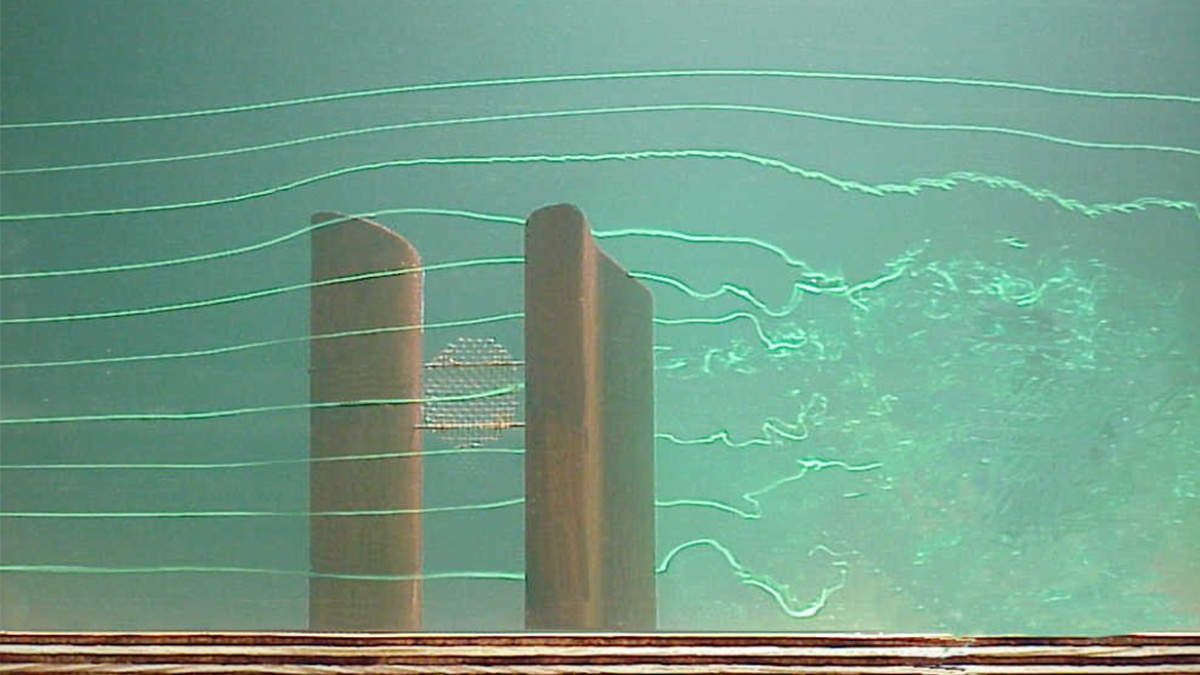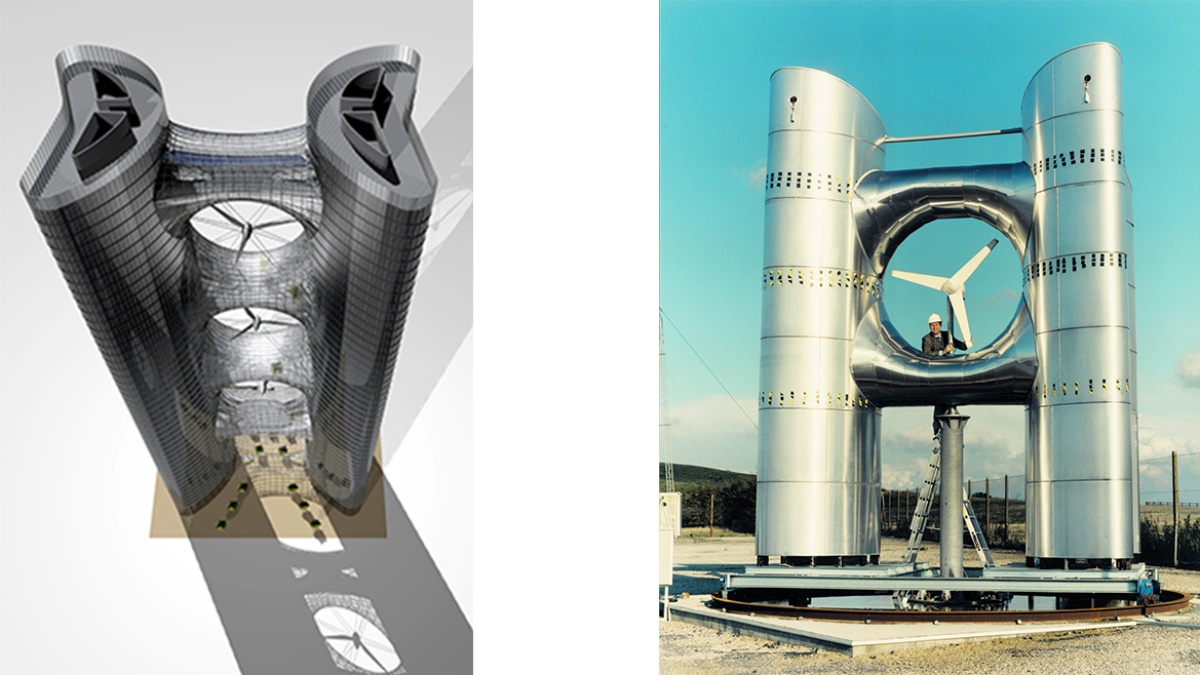WEB Wind Energy in the Built Environment
Wind energy is mainly used by freestanding plants at windy locations near the coast or in the low mountain ranges. Support measures and the industrial production of wind turbines have made wind energy economically interesting.
The main focus of the WEB project is the development of technologies that enable the integration of wind energy utilization in the built environment while making optimal use of the site factors. The integration of wind turbines in buildings poses several problems. Neither the turbine nor the building can track the wind. In general, the expected average wind speeds in urban areas are lower and the turbines are located close to people and buildings.
Different building shapes were aerodynamically investigated, a twin tower with a "boomerang ground plan" was tested as a 1:7 scale model. If the rotors were placed inside the nozzle-shaped building configuration, the wind speed at the rotor increased by 1m/s and generated considerably more power than free-standing turbines. Extrapolating the results of the rock test, a correspondingly larger building would have an energy yield at least 25% higher than that of a conventional plant. Further gains can be made if it is possible to expose the rotors to stronger wind speeds at high altitudes.
Aerodynamic constructions are not optimal in terms of space and energy. Acoustic, vibration-related or electromagnetic interference occurs in the vicinity of the rotors. This is where the supply zones are located. For structural optimization, streamlined turbine suspensions, safety nets in case of turbine failure and solutions to the rotary sound vibration problem were investigated. The principles developed during the project show how the concept of integrating wind energy into buildings could be implemented. They can also be applied on a smaller scale or to uninhabited energy towers, as well as on land or in the open sea.
Duration: 1998 - 2000
IBK2 I Research + Development
BDSP Partnership Ltd. London (UK)
Client:
THE EUROPEAN COMMISSION in the framework of the Non Nuclear Energy Programme JOULE III
Parties involved:
MECAL Applied Mechanics BV.
Enschede (NL)
Imperial College
Department of Aeronautics
London (UK)
Rutherford Appleton Laboratory (UK)
Energy Technology Support Unit (UK)
Department of Trade and Industry (UK)


